Cork tiles offer a unique blend of warmth, style, and sustainability.
They can fit almost any design aesthetic, from modern minimalist to rustic charm.
Their natural texture and insulating properties make them a great choice for adding comfort to your home.
Here are seven creative ways to use cork tiles to make your space cosier.
Cork Tiles in the Kitchen
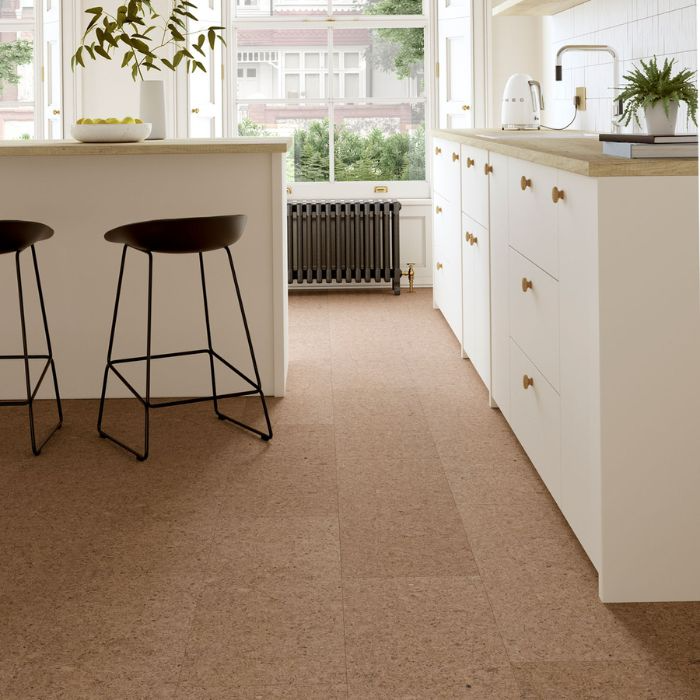
Cork tiles in the kitchen provide a warm, comfortable surface underfoot, perfect for those long cooking sessions. The natural cork material offers excellent cushioning and insulation, making it ideal for a busy kitchen.
The neutral tones blend seamlessly with white cabinets and countertops, creating a clean and inviting atmosphere.
Living Room Cork Flooring
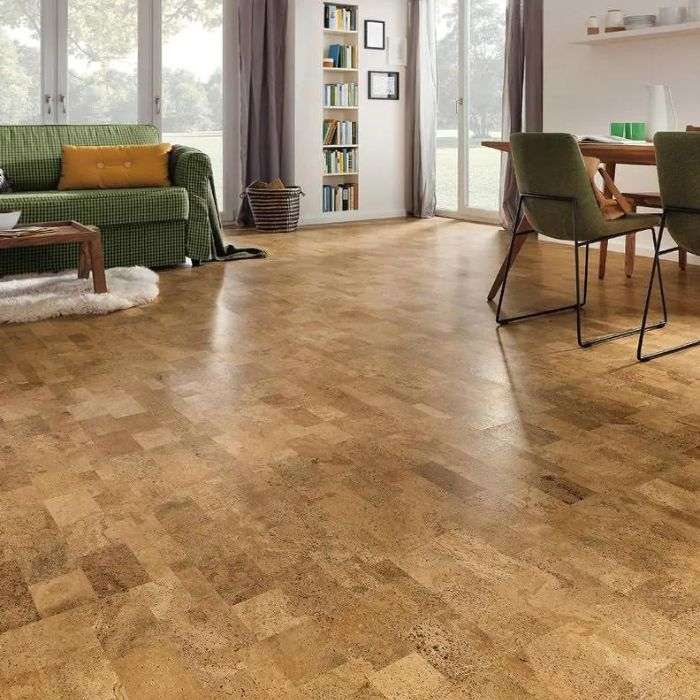
Cork flooring in the living room adds warmth and softness, making it a great choice for family gatherings and relaxation. Its natural insulation properties help maintain a comfortable temperature and reduce noise.
The golden tones of cork tiles pair beautifully with various furniture styles, from contemporary to vintage.
Bedroom Accent Wall
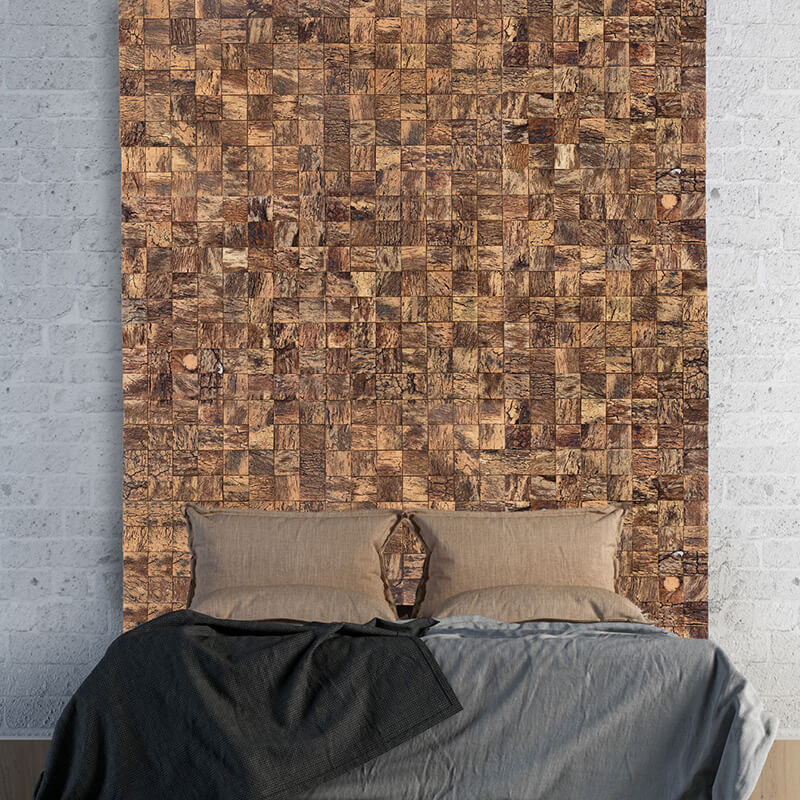
A cork accent wall is a unique and cosy addition to any bedroom. The cork’s texture and natural warmth make the wall a stylish focal point and a comfortable spot to lean against while reading or watching TV. It’s a simple way to add a touch of rustic charm and comfort to your sleeping space.
Cork Wall in the Home Office
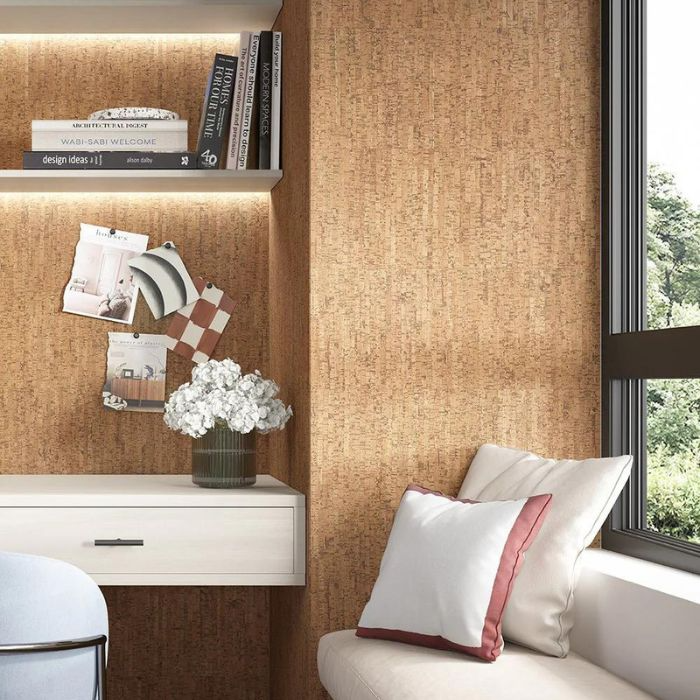
Cork walls in the home office create a cosy, creative space. Cork tiles can cover a whole wall, offering a stylish and practical solution for pinning up important documents, schedules, or inspirational images.
The natural, earthy tones of cork can help reduce stress and increase productivity, making it a great choice for a work-from-home environment.
Earthy Kitchen Backsplash
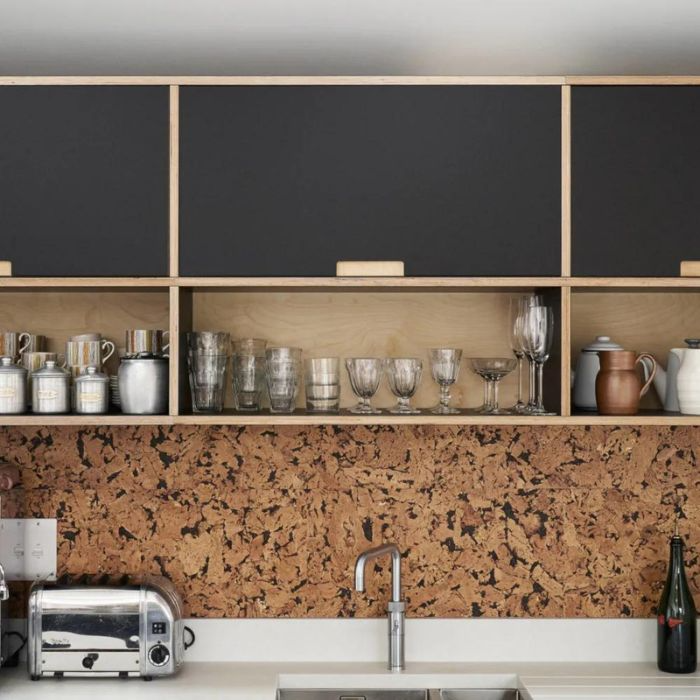
A cork kitchen splashback can add a touch of warmth and texture to your cooking space. It’s a practical choice—easy to clean and naturally resistant to mould and mildew.
The cork’s earthy tones complement various kitchen styles, making it a versatile addition. Plus, it’s a sustainable option, perfect for eco-conscious homeowners looking to add a unique element to their kitchen decor.
Cork Wall in the Living Room
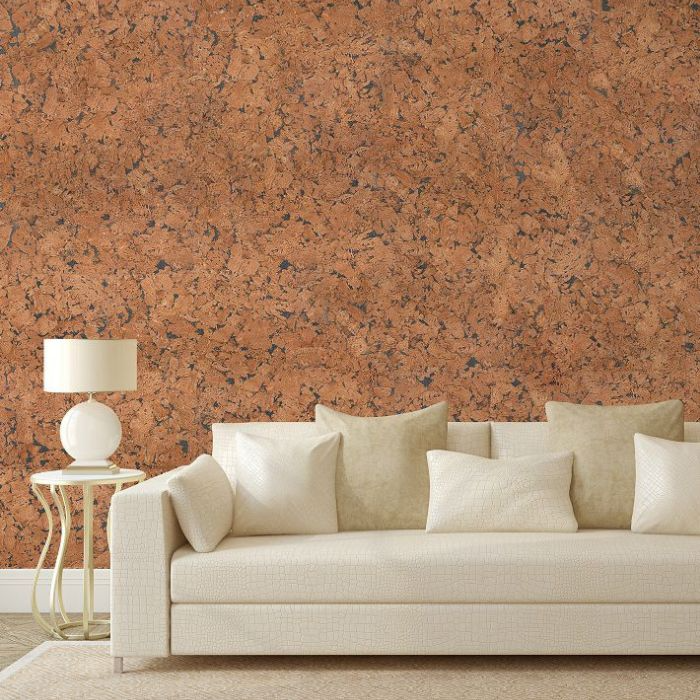
Adding a cork wall to your living room creates a cosy and inviting atmosphere. The natural texture and warmth of cork bring an organic feel to the space, making it perfect for relaxation.
The cork wall can also act as a great sound insulator, reducing noise levels for a more peaceful environment.
Accent Wall in the Study
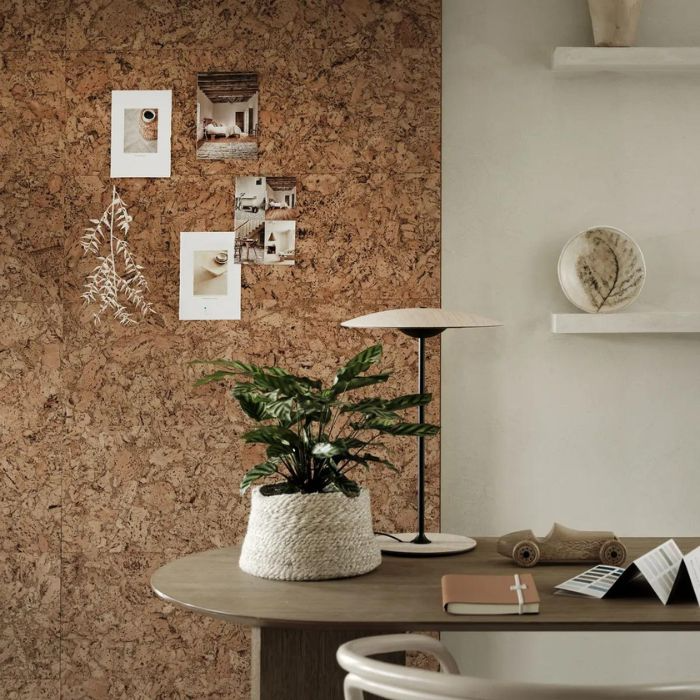
Transform your study with a cork accent wall. It’s stylish and can be a giant pinboard for notes, photos, and inspiration.
The natural look of cork brings a touch of the outdoors inside, making the space feel more relaxed and inviting. Perfect for creating a cosy yet productive work environment.
FAQ
What Are the Disadvantages of Cork Tiles?
While cork tiles are cosy and stylish, they do have some drawbacks. They can be prone to scratches and dents, especially in high-traffic areas or homes with pets.
Additionally, cork can fade with prolonged exposure to direct sunlight. Proper sealing of cork tiles prevents moisture damage.
What Happens if Cork Flooring Gets Wet?
If cork flooring gets wet, it can absorb the moisture, leading to swelling and potential damage. However, properly sealed cork tiles are water-resistant and can handle occasional spills.
Clean up any standing water quickly to prevent long-term damage, and reapply the sealant periodically.
What Do You Put Under Cork Tiles?
You typically put a moisture barrier or underlayment under cork tiles. This helps protect the tiles from moisture from the subfloor and provides additional cushioning.
The underlayment also assists in soundproofing, making your cork flooring quieter and more comfortable to walk on.
Are Cork Tiles Expensive?
Cork tiles are generally in the middle price range compared to other flooring options. While not the cheapest, they are more affordable than high-end materials like hardwood.
The cost can vary based on the quality and thickness of the tiles, but they offer good value considering their durability and environmental benefits.
Conclusion
Cork tiles are a versatile, eco-friendly option that can make any space cosier.
While they have disadvantages, proper care and installation can mitigate these issues.
Cork tiles offer a unique blend of style and comfort whether you want to add warmth to your kitchen, living room, or bedroom.


